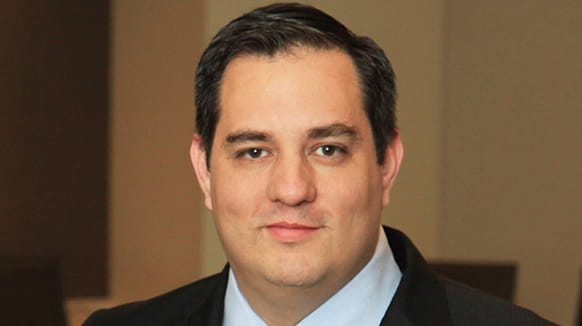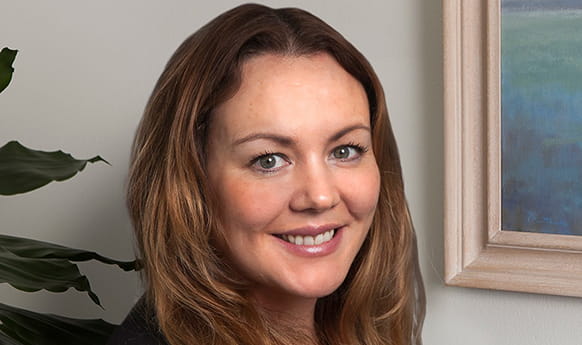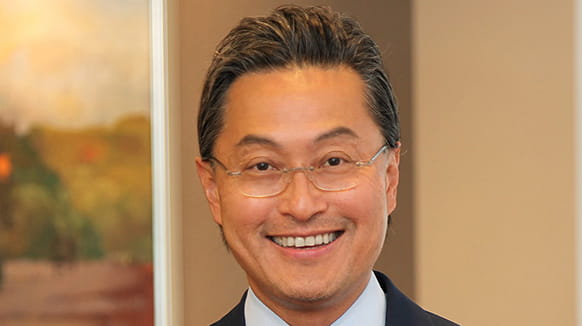Haynes and Boone was heavily involved in this year’s Virtual Fund Finance Symposium in November. Partner Albert Tan conducted a keynote interview with Ronnie Chan, Chairman of Asia Society and Hang Lung Group. Partner Javier Martinez participated on a panel titled “Living in Interesting Times: A Year in Review,” and Partner Emma Russell co-chaired the European conference and spoke on two panels: “Bolder than Big Society” and “Women in Fund Finance.”
Introduction and Fund Finance Association (FFA) Update:
The conference was the first of its kind in the industry and was well-attended, with numbers peaking on Day 1 at 449 (numbers based on the live stream and does not include people watching on a re-record). The conference provided two days of European content followed by two days of Asian content, closing off with the global initiatives days on Friday.
The FFA has had a number of successful programme developments over the year:
- The mentor programme launched in the U.S. with 15 mentor/mentee pairs. With the EMEA and Asia sections expected to launch in Q1 2021.
- The introduction of the Rising Stars Awards recognising upcoming stars in the industry focusing on outstanding overall contributions to the FFA, clients and industry.
- FFA University being the training arm of FFA.
- Diversity had their happy hour last month with a standing inclusion panel on the Friday of FFA Conference.
- Women in Fund Finance have had multiple virtual events this year with more in pipeline for next year.
Conference Panel Summary:
The conference included 20 optional panel sessions, 12 in Europe and 8 in Asia which covered topics such as a’ Year in Review,’ ‘Secondaries,’ ‘Beyond the Sub Line,’ ‘Adapting to Change,’ Evolving Asia Fund Finance Market,’ Legal Credit Underwriting and Regulatory and a ‘Comparison of the Asia Fund Finance Market with U.S. & Europe. We also heard from Preqin for both Europe and Asia who noted the following:
Europe:
- Private capital has seen a record AUM, passing $7trillion as of March 2020 with private equity accounting for almost half of all AUM. Dry powder is also at a record level of $3trillion as of October 2020, double the Global Financial Crisis level.
- Fundraising was hit hard in Q3 2020 compared to what was a positive Q2 for closing and aggregate capital raised. Interestingly, debt accounts for a greater share of funding in funds closed and aggregate capital raised.
- While funds closing in Q3 fell, the aggregate capital raised was less severely impacted. The reason for the resilience is because in recent years capital has concentrated in the large GPs in the market, with them taking a disproportionate share of the new capital. This means they have a global reach and in effect create their own gravity in the fundraising world and can leverage existing relationships. Importantly, of all funds reaching final close in 2020, almost 50% of them reached their initial target. This is the highest proportion since 2011.
- Deal activity is down but still had over 4000 completed by the end of Q3 2020. Investors are taking a cautious approach and focusing on smaller transactions with the average size being $36m in 2020, compared to an average of $47m between 2015-2019. It is believed that once the economy improves and a vaccine is approved, that deal flow will recover.
- Investor views on the impact of COVID on the long term of private capital varied with many having a moderately negative view on the impact on returns. However, 66% saw no need to change to their future or alternative investment strategy and 27% even said they would invest more in alternatives. Over half of those surveyed see positives in secondary markets but LPs are likely to avoid moving until prices settle to avoid any crystallization of losses.
Asia:
- Asia-Pacific’s (APAC) Assets under Management (AUM) has just recently, for the first time, surpassed Europe. APAC’s growth is mainly powered by private equity and healthy increases in real estate and private debt.
- A key driver for APAC’s rise has been China with the growth in its economy, its relaxation of rules for insurers in middle of this decade and national efforts to introduce government guidance funds; all contributing to Chinese AUM.
- Trade friction has caused APAC’s Aggregate Capital Raised to decline since 2018 after peaking in 2017. However, both North America and Europe peaked last year in 2019 and all markets have declined in 2020 due to COVID pandemic. While this is not positive, it shows there is still potential for more growth for subscription financing.
- Only 17% of APACs fund market is using subscription financing while 7% is considering and 76% have no plans of using it as opposed to 39% usage and 5% consideration rates in North America and 24% usage and 6% consideration rates in Europe. This indicates that APAC is still behind the North American and Europe markets
- The Global Alternatives AUM forecasted by Preqin for 2025 is $17.2tn with largest increase from PE and VC. The other two asset classes to increase are Hedge funds and Private Debt. Preqin have been bold with this forecast because of the responses from investors. Investors long term view is that there will be no change to investment strategy or if anything they will invest slightly more into Alternative Investments.
- Investors views on which emerging markets currently present the best opportunity differs depending on region but for natural resources, investors agree South America presents best opportunity.
- China’s formula for success consisted of lockdown, containment, and recovery. The recovery is going well in China with metrics showing things have picked up since Q3. Bond yields in China are 3.1% versus 0% in most other countries. There is nearly 5x the capital flow into China, making China the second largest bond market in world. The economy is relativity okay as it and trade are growing. Growth in China and a vaccine will together help the overall economic recovery starting with China and will spreading to the rest of the world.
- Consolidation in the market is flowing toward larger GPs with COVID having enhanced this effect as LPs prefer to work with familiar GPs with high visibility. The amount of capital new GPs are raising is at a decade low from billions to hundreds of millions of dollars raised.
- Subline lending in China generally involves lending to dollar-based Cayman Islands funds as current Chinese regulations limit such form of financing for RMB funds. While the market has evolved and the system itself very healthy with very strong players, the panel does not see regulators allowing subline lending in RMB. China also lacks a base of diversified institutional investors, further holding up the local market.
- There have been over 30,000 capital calls since the pandemic, but no defaults. Most investors are coming through, or otherwise dealt with without much issue. Some LPs are even asking mangers to pursue leverage to ease the burden of capital calls.
- Subline financing is seen as a real safety net with fund managers increasing their line and a rush of managers in April and May putting lines in place before spreads got too high. There is continued growth in large global managers and managers creating separate funds for investments in Asia and global funds across multi-sectors. This will create a real niche market for smaller fund managers.
ESG Key Takeaways:
ESG featured in a big way at the conference with two panels focusing on various aspects including Carrots & Sticks which focused on the regulatory aspects and Bolder than Big Society which looked at sustainability linked financing in a Funds Finance context and the way in which banks operate a KPI approach to the credit analysis of this type of finance.
The panel noted that we are also seeing new movement of money in ESG with inflows into ESG funds considerably outperforming traditional portfolios. The idea that putting something into ESG meant you were sacrificing performance is not correct.
It seems like there is less of an appetite for these products amongst lenders in the US than in Europe, but with the recent sustainability linked financings that have been put in place being large syndicated deals it means there are now a growing number of lenders in the market who have experience with putting this type of financing in place.
We also heard from Preqin who noted the following 2/3 of investors stated ESG will become more integral to industry in the next 36 months. There seems to be investors appeal for an active ESG policy in risk management, public perception and returns. While 39% stated they paid no attention to ESG, 34% stated shareholder and public perception were a key appeal of an active ESG policy. Clearly growth in client demand is pushing ESG to be included. Within Europe, 58% who are invested in ESG are committed real estate investors. 77% of the ESG committed real estate investors have at least an AUM of $1bn. The large funds that this is attracting means it is becoming standard business practice for an ESG focus to be added by GPs. In 2020 those GPs committed to ESG closed 127 funds for $177bn, while 180 other funds in market raised over £100bn so far. Preqin found 82% of managers with $3.6bn AUM had a public policy for diversity and inclusion within their hiring process compared with 88% of those below this AUM not having a policy at all.
Keynotes:
- The conference was fortunate to have a number of excellent key note speakers this year. Sir Ronald Cohen (Founder of Apax Partners, Chair of the Global Steering Group on Impact Investment) discussed how the market is growing and adapting to be able to assess the impact that companies have with respect to ESG factors. His work with Harvard Business School has taken ESG metrics and transmuted them into financial terms. They assessed the impact of 1800 companies, finding together they cause about $3tn worth of environmental damage, with 250 of these companies causing more damage in a year then they make in profit. He did highlight that the next steps that need to be taken are by governments, in particular by legislating for impact weighted accounting to be published by all companies.
- The conference also had the benefit of hearing from Helge Weiner-Trapness, who works for the International Finance Facility for Immunisation (IFFIm) (an independent arm of the Global Vaccine Alliance (GAVI)). His talk focused on the excellent work that GAVI does in the developing worlds and highlighted the economic benefits that can be seen by having a vaccinated population. Although, he did note that the benefits of vaccinations are not something which can be harvested by private capital and so this benefit requires governmental intervention. Where he has found private capital to be useful in this space is through the purchasing of IFFIm bonds, allowing GAVI to have instant access to cash which has been pledged by governments.
- The first day of the Asian Conference heard from Weijian Shan (Chairman and CEO of PAG), who highlighted his time as an adolescent during the Cultural Revolution in China. As a part of the program to send urban youth to the countryside, Shan was sent to toil in the Gobi Desert. During this time, secondary education and anything considered “intellectual,” including reading, were effectively banned by the government.
- On Day 2, Hiro Mizuno (Tesla Board Member) spoke to the conference about ESG. He discussed the two ways to look at ESG, being from a return perspective and a risk perspective. He highlighted that it is often easier to find consensus when ESG is looked at from a risk perspective as regardless of arguments concerning returns, all agree that ESG issues present risks to companies. Hiro also highlighted the fact that there is an argument that ESG disclosures need to be standardized and this is currently in progress but noted that the reason it has taken so long may be due to the lack of sophistication among ESG analysts.
- Finally, the conference heard from Ronnie Chan (Chair of Asia Society Hong Kong and Hang Lung Group) who discussed a number of issues concerning Asia. He believes that Hong Kong will remain as an international financial Centre, noting that the region has been the number one IPO market in the world for the last few years and Chinese companies continue to choose Hong Kong as their IPO market. Alongside this he stated that investments banks still find Hong Kong the most attractive location when they want to access mainland China. He went on to discuss the fact that investors who are interested in the Chinese market must maintain calmness and recognize what are facts and what is political talk.
If you would like to discuss or receive more further detailed notes on any of the sessions, please feel free to reach out to Emma Russell, Albert Tan, Javier Martinez, or Cormac Ryan or any other members of our Fund Finance Team.


